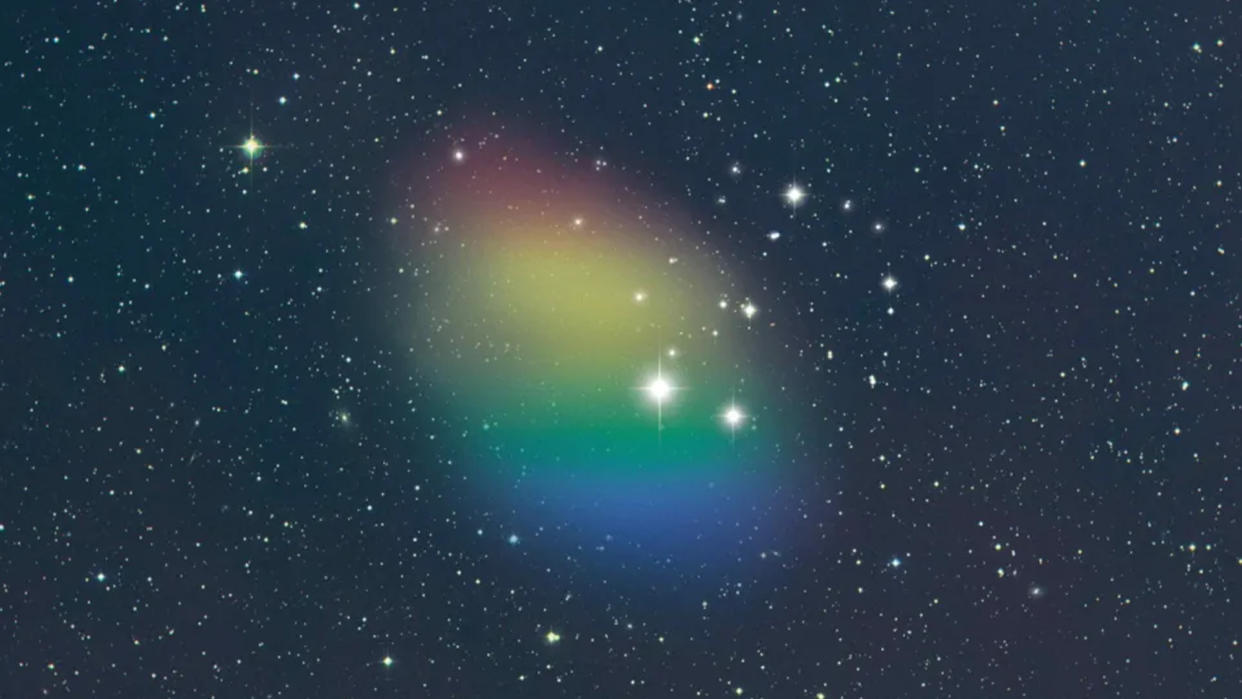Typo in telescope coordinates reveals one of the faintest galaxies in the known universe

Scientists have serendipitously discovered what is possibly the faintest galaxy ever seen after making a typo in their telescope coordinates. The unusual object is seemingly made entirely from spread-out gas and doesn't contain any visible stars.
The new galaxy, which scientists have named J0613+52, was first detected when a typo in the coordinates pointed the Green Bank Telescope (GBT) in an unintended direction. Scientists caught the mistake during a routine calibration against the Arecibo telescope in Puerto Rico, but the team was surprised to discover that the accidental observation spotted an isolated and unrecorded object known as a dark primordial galaxy, according to research presented Jan. 8 at the American Astronomy Society's annual meeting.
"We have an object whose evolutionary history is undisturbed by anything else around it. An object that has formed stars of its own accord, not as the result of a gravitational interaction with other objects," Karen O'Neil, the lead astronomer on the discovery from the Green Bank Observatory in West Virginia, told Live Science. The galaxy's complete lack of neighbors, coupled with the extremely spread-out gas within the galaxy means that relatively few stars are likely to have formed. Any stars that may have been born aren't visible, which makes the object dark and therefore particularly difficult to detect with current instruments.
O'Neil estimates J0613+52 is around 260 million light-years away, placing it well outside of the Milky Way and into the region of space known as the Nearby Universe. However, despite the difficulty of observing and measuring this dark object, the team has already drawn several comparisons with our home galaxy.
Related: James Webb Space Telescope finds the faintest galaxy ever detected at the dawn of the universe
"We know the total amount of neutral hydrogen — it's a little bit less than the Milky Way has," O'Neil said. "The total mass of the galaxy is also similar to the total mass of the Milky Way. But what that mass is made up of, we're not sure yet!"
However, scientists still don't have enough data to estimate the galaxy's size, structure or origins.. "The Green Bank Telescope is a fantastically sensitive instrument, but its resolution on the sky is pretty coarse," O'Neil added. "You can think of it as having ginormous pixels in the sky. We know the object sits within one of these pixels so now we need to get deep optical images [and zoom in on that pixel]."
RELATED STORIES
—James Webb telescope discovers the oldest, most distant black hole in the universe
—'A big cosmological mystery': Newfound cosmic corkscrew defies our understanding of the universe
—Unexpected cosmic clumping could disprove our best understanding of the universe
O'Neil hopes to do just that using other Northern Hemisphere telescopes such as the Very Large Array (VLA) in New Mexico or the Large Binocular Telescope (LBT) in Arizona. More instruments and additional wavelengths should help the team get deeper images of the galaxy. "If we're lucky, we'll actually see the object and then we can start looking for and measuring other gasses, and that will tell us if we're correct about the age of the stars in the system," O'Neil said.
Such a dark, diffuse and untouched system is right at the extreme of what we know is possible in the universe. For O'Neil, this is what makes the discovery so exciting.
"My suspicion is that this object is not unique," O'Neil said. "It's going to help us understand star and galaxy formation as a whole."

